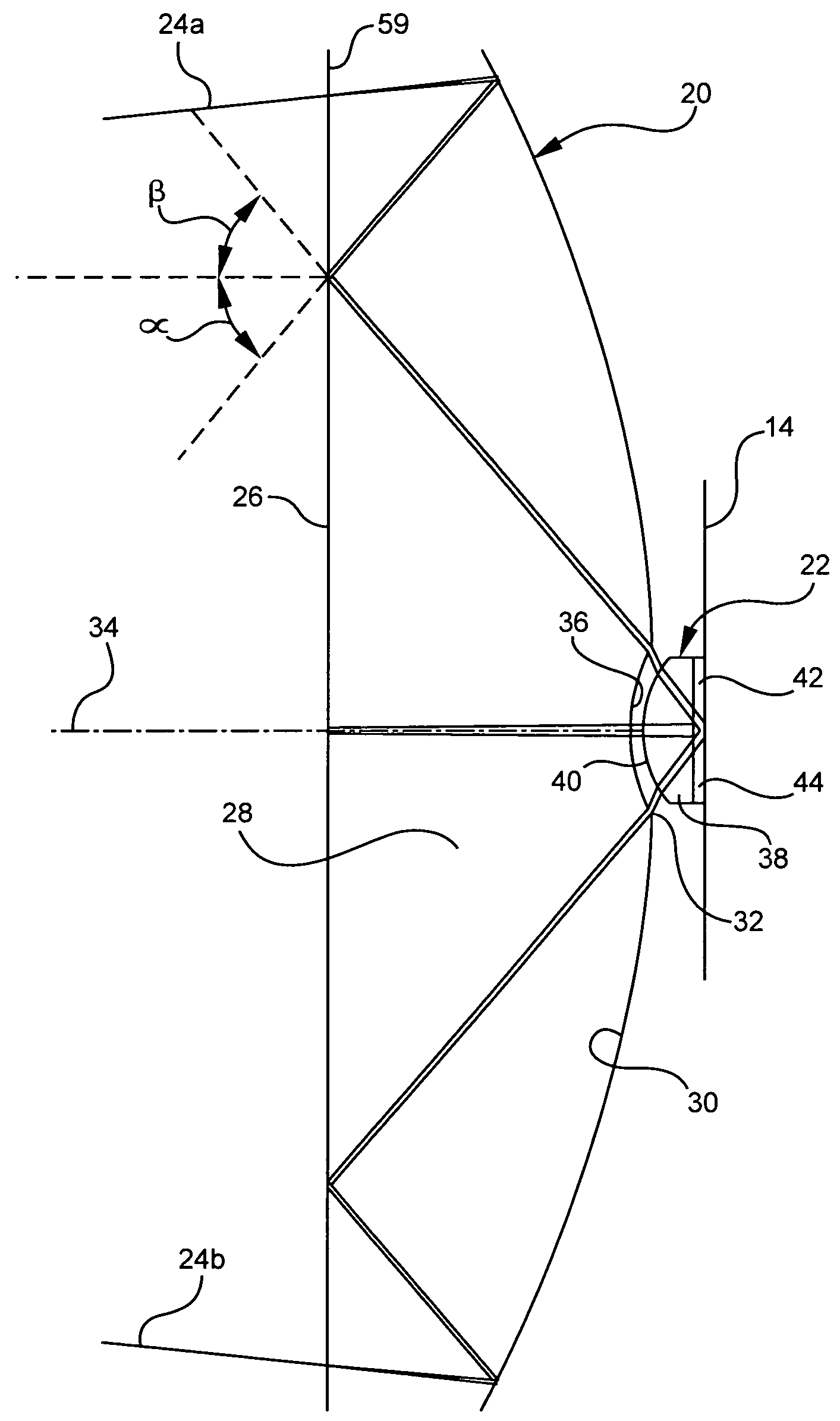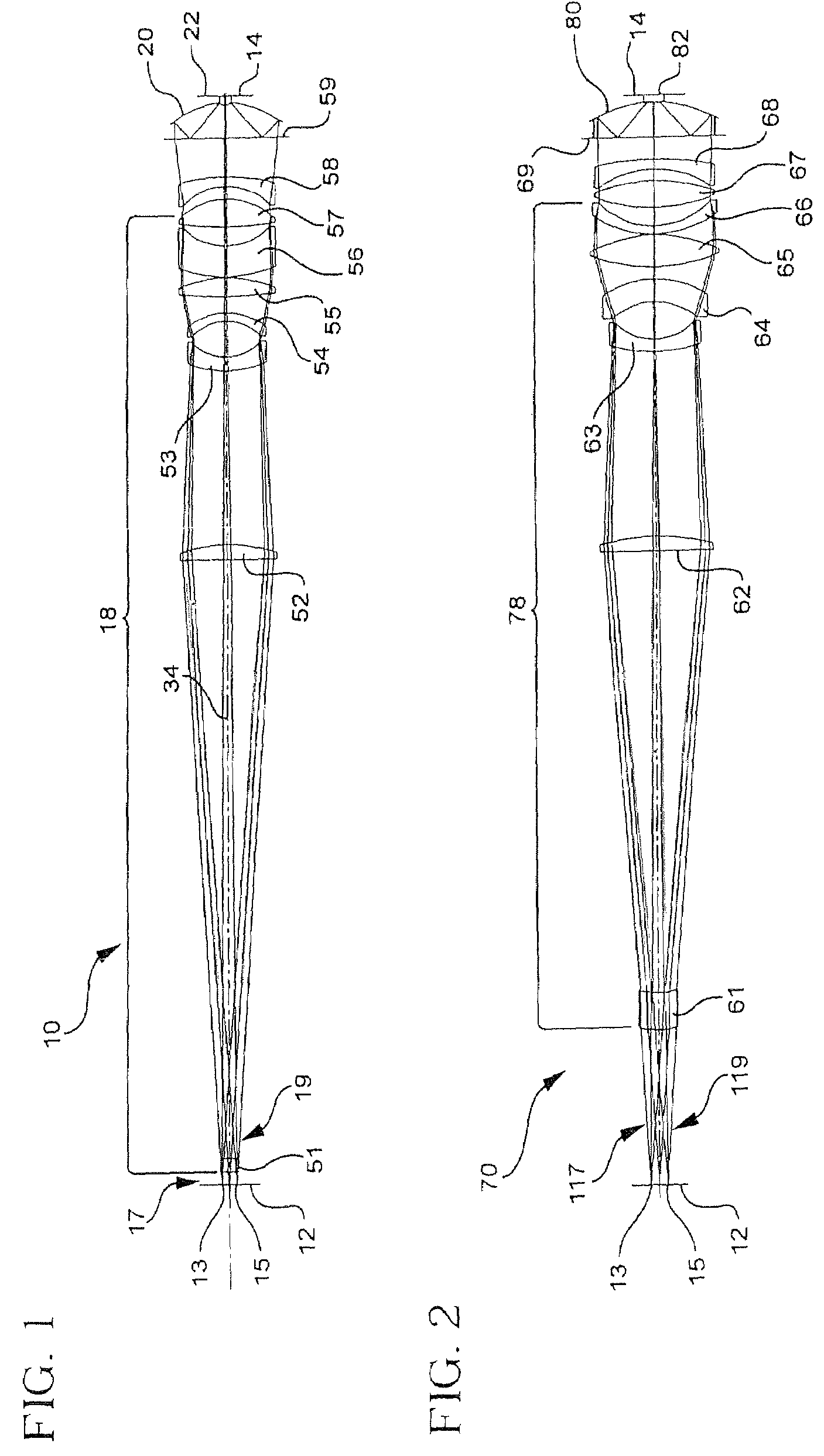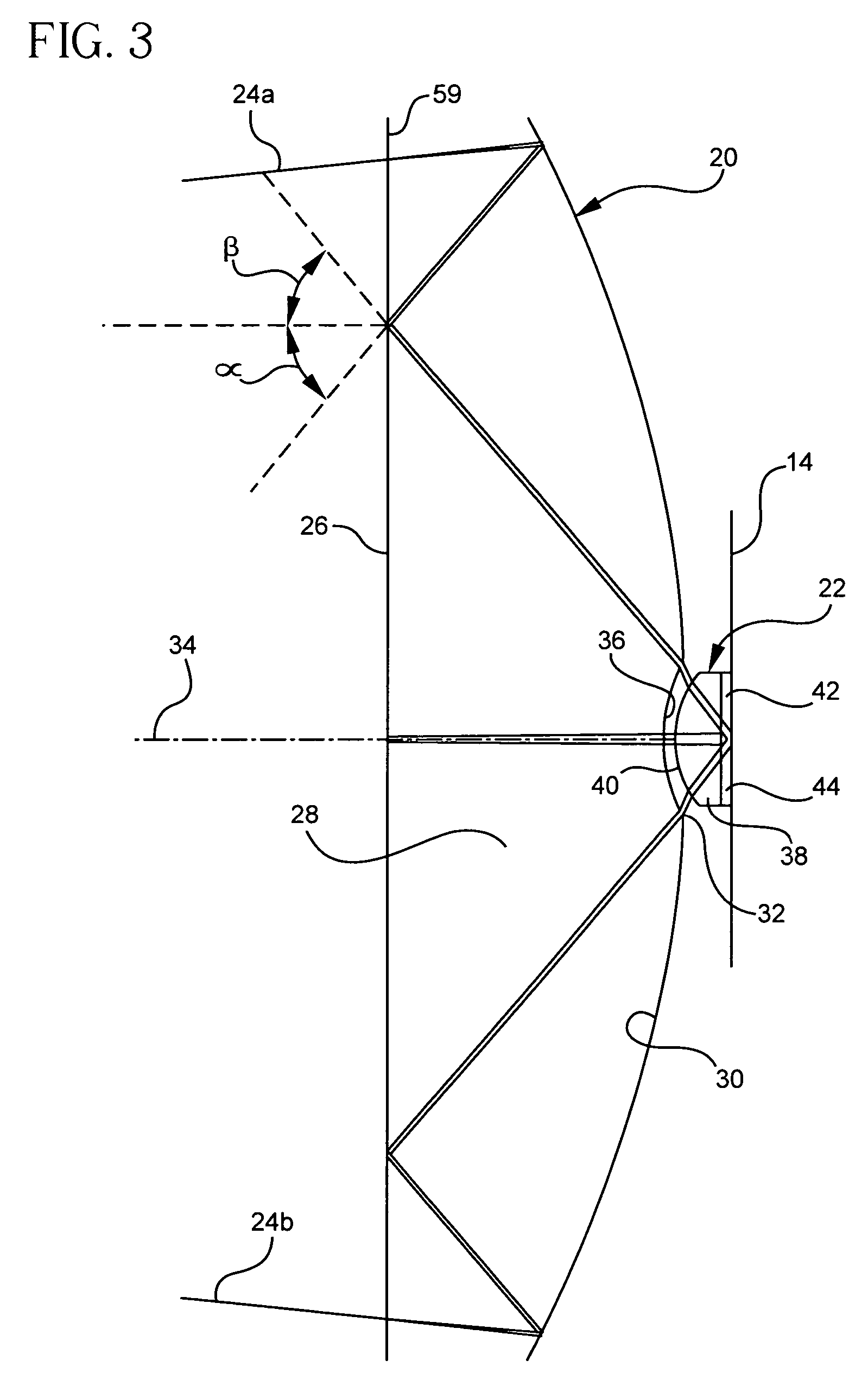Catadioptric imaging system for high numerical aperture imaging with deep ultraviolet light
a technology of catadioptric imaging and ultraviolet light, applied in the field of imaging systems, can solve problems such as limited beaming, and achieve the effects of reducing te polarization components, and reducing tm polarization components of rays
- Summary
- Abstract
- Description
- Claims
- Application Information
AI Technical Summary
Benefits of technology
Problems solved by technology
Method used
Image
Examples
Embodiment Construction
[0042]A catadioptric imaging system 10 for microlithographic projection is shown in FIG. 1 in an arrangement for imaging a reticle 12 (object) onto a resist 14 (image). An enlarged view of a double-reflecting Mangin mirror 20, which provides substantial focusing power for the imaging system 10, is shown in FIG. 3. An assembly 18 of largely refractive components is arranged for filling the aperture of the double-reflecting Mangin mirror 20 while assisting in the correction of aberrations. Throughout the assembly 18, refraction angles are minimized to avoid the introduction of unnecessary aberrations. A field correcting optic 22 operating in an immersion mode works in conjunction with the Mangin mirror 20 to produce a final image of the reticle 12 on a focal plane of the resist 14.
[0043]The focusing power of the double-reflecting Mangin mirror 20, which is positioned at or near a pupil of the imaging system 10, is apparent from the depicted paths of marginal rays 24a and 24b through t...
PUM
| Property | Measurement | Unit |
|---|---|---|
| wavelengths | aaaaa | aaaaa |
| refraction angles | aaaaa | aaaaa |
| angles of incidence | aaaaa | aaaaa |
Abstract
Description
Claims
Application Information
 Login to View More
Login to View More - R&D
- Intellectual Property
- Life Sciences
- Materials
- Tech Scout
- Unparalleled Data Quality
- Higher Quality Content
- 60% Fewer Hallucinations
Browse by: Latest US Patents, China's latest patents, Technical Efficacy Thesaurus, Application Domain, Technology Topic, Popular Technical Reports.
© 2025 PatSnap. All rights reserved.Legal|Privacy policy|Modern Slavery Act Transparency Statement|Sitemap|About US| Contact US: help@patsnap.com



